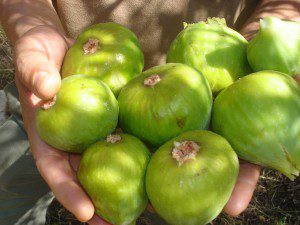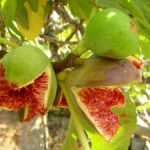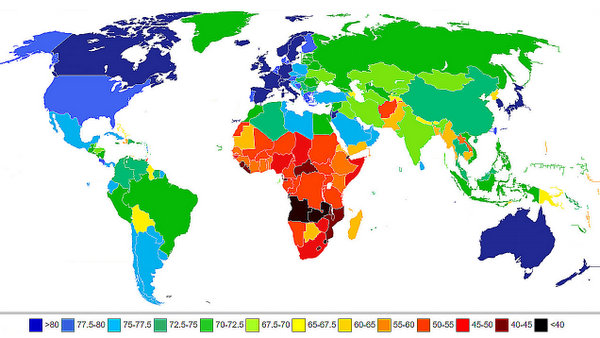Signs of the End of the Age and of Christ’s Return
When Jesus’ disciples asked Him, “What will be the sign of Your coming, and of the end of the age?” (Mathew 24.3), He identified four types of end-time sign (see also Mark 13 and Luke 21):
- Signs in the world – wars, earthquakes, famines, lawlessness, wild weather …
- Signs in the church – worldwide gospel preaching, persecution, apostasy, false prophets …
- Signs in Israel – invasion, severe persecution of Jews …
- Signs in the heavens – fearful solar and cosmic disturbances, asteroids …
Jesus said that when we see these signs then “know that the kingdom of God is near” (Luke 21.31). He said these signs point to His imminent return and the establishment of His kingdom on earth. So Jesus stressed that it was important to watch for these signs:
Watch therefore, for you know neither the day nor the hour in which the Son of Man is coming (Mat 25.13)
After describing the above signs, Jesus gave a mysterious parable. He associated the observation of these signs with the Parable of the Fig Tree.Why? It turns out that understanding this parable is the key to unlocking the mystery of what is now happening in the world. The parable leads to a very important sign, and one promised by the prophet Isaiah:
He will set up a sign for the nations (Isa 11.12)
What is it?
An Important Sign: The Parable of Israel the Fig Tree
After describing some end-time signs to watch for, Jesus ends with the parable of the fig tree. He told His disciples:
Now learn this parable from the fig tree: When its branch has already become tender and puts forth its leaves, you know that summer is near. So you also, when you see all these things, know that it is near – at the doors!
(Mat 24.32,33)
Why did Jesus associate a fig tree with the end time signs? Some argue that Jesus was just using a simple horticultural observation. Quite simply – the fig tree is one of the last trees to bud in the spring and so when it’s leaves are budding we know that summer is just around the corner! So, they argue, Jesus was simply saying; “when the fig tree buds you know that summer is near – likewise, when you see all these things happening, know that the end is near”. They deny that there is any positive association of Israel with a budding fig tree, link. On the other hand, Jesus used the concept of a parable, implying that underneath He was teaching a deep truth. Was He referring to Israel in the last days? Should we view the Parable of the Fig Tree as The Parable of Israel the Fig Tree?
Consider A Little Horticulture
The common or edible fig (Ficus carica L.) is native to the Mediterranean/Israel region, where it can produce three crops per year, link, link. Breba figs develop in the Spring (May) on the previous year’s shoot growth. They are generally inferior to the main crop and are often discarded to encourage growth of the main crop, link. Two main crops follow in July-November, with pollinated (caprified) figs in August-September. Pollination (caprification) of the common fig can markedly increase fig size, link and is done by fig wasps transporting pollen from Capri fig flowers. In contrast to most fruit trees, the Autumn figs (the main crop) develop on the new wood that grows in Spring.
Ficus carica was cultivated for its fruit thousands of years ago and figs are often referred to in the Old Testament. It is interesting to note that the Bible also refers to three crops of figs:
- ‘early, first ripe, first fruit before the summer, very good figs’ (Isa 28.4; Jer 24.2,3; Hos 9.10) – a relatively small crop with the best flavour, June-July
- ‘sweetness and good fruit, the season for figs’ (Judg 9.11, Mk 11.13) – main crop, August-September. Made into cakes for winter use (1 Sam 25.18)
- ‘green, bad, inedible figs’ (Song 2.13; Jer 24.2,3; Jer 29.17) – green or winter figs, small, unripened, unsweetened, inedible fruit, link, link
Spiritual Implication: the End-Time Budding of Israel
Fig horticulture identifies good sweet figs, the first of the summer figs, and poor, unripe and often inedible figs. The significant point here is that the Bible associates these qualities with the people of Israel. For instance, the ‘fathers of Israel’ or Patriarchs are seen as the best figs – the first-fruits of the summer crop:
I found Israel .. your fathers as the first fruits on the fig tree (Hos 9.10)
God sees this minority of Israel as the first and best of the nation. These figs contrast with the green, inedible figs. Both types of fig symbolize the people of Judah before their deportation to Babylon; they are seen as good and bad figs:
The LORD said to me ‘What do you see, Jeremiah?’ And I said, ‘Figs, the good figs, very good, and the bad, very bad (Jer 24.3)

Large ripe figs
Jeremiah 24.5-8 shows that God is referring to those Jews who are whole-hearted followers of God (the good figs), and to those rebellious Jews who had rejected God (the bad figs). Likewise, in the time of Christ, most Jews rejected Him and remained dead in their works and legalism. They were like green, unripened, unsweetened figs. Today, most Jews can be seen as green figs, whilst a few (the messianic Jews) are like sweetened ripe figs.
The consequences of rebellion against God is well illustrated in the incidence of the ‘Withered fig tree’ (Mat 21.18,19). Jesus found no fruit (apparently, not even the unripe breba crop), and so He cursed it and it died. This was prophetic, looking to the destiny of the Jews when they were to be scattered by the Romans in 70 AD. Like the cursed fig tree, the nation of Israel seemingly died. In contrast, Jesus gave an extremely important prophecy that applies to our time. To repeat:
Now learn this parable from the fig tree: When its branch has already become tender and puts forth its leaves, you know that summer is near. So you also, when you see all these things, know that it is near – at the doors! (Mat 24.32,33)
Look at the fig tree, and all the trees. When they are already budding you see and know for yourselves that summer is now near. So you also, when you see these things happening, know that the kingdom is near (Lk 21.29-31)
Note that Jesus refers to the tenderbranch, implying new wood and the coming good summer fruit on the new wood. Since the fruit of the fig tree is established in the Old Testament as symbolizing the spiritual state of the people of Israel, many see this coming ‘summer crop’ as the restoration of the people of Israel (generically referred to as ‘Jews’) to their own land. The fruitless dead wood of scattered Israel is replaced by fruit on new wood. It is likened to a people drawn back into their own land and a nation that becomes a sign to the Gentiles. A remnant of this people become ‘the good, sweet crop’. This process has been underway now for over 100 years, link.
So when we refer to ‘Israel the fig tree’ we see both Old Testament Israel, and modern re-gathered or ‘budding’ Israel. The ‘good crop’ could include the 144,000 Messianic Jews drawn from the twelve tribes of Israel who will evangelize the gentile nations at the very end of this age (Rev 7.4-8). The result is the salvation of a countless number of Gentiles during the Great Tribulation:
I looked and saw a great multitude … of all the nations … clothed with white robes … these are the one’s who come out of the great tribulation (Rev 7.9,14).
The Message behind the Parable:
Regathered Israel is a Sign to the Nations
It seems that when Jesus spoke of the appearance of new shoots on the fig tree as signalling that summer is near, He was actually alluding to the restoration of Israel and His imminent return. He was saying that when we see Israel regathered in her own land and ‘budding like a fig tree’ then His return is near – even ‘at the doors’. This will be the time of the coming of the fullness of the Kingdom of God on earth.
Israel and the Timeline for the Last Days
In Luke 21 Jesus said ‘look at the fig tree (Israel) and ‘all the trees’ (the Gentile nations) and so observe the signs of the times. He implied that Israel will be the vortex of the nations. So let’s now apply the parable of Israel the fig tree to the observed world scenario and ask the question, ‘When did the fig tree (Israel) start to bud?’ ‘When did Israel emerge onto the world scene?’ When we trace a timeline of world events from this time we find that many issues of today are closely linked to Israel! We see that Israel is increasingly the vortex of the world.
One day the disciples asked Jesus:
“What shall be the sign of thy coming, and of the end of the world?” (Matthew 24:3).
In answer to this question, Jesus spoke a parable of the Fig Tree, which combined with Psalm 90 and the rebirth of Israel in AD 1948, now gives us the YEAR of Christ’s return – AD 2028.
PROPHECY IN PSALMS
After Jesus resurrected from the dead, he met with his disciples and explained to them:
“These are the words which I spoke unto you, while I was yet with you, that ALL THINGS MUST BE FULFILLED, which were written in the law of Moses, and in the prophets, and IN THE PSALMS, concerning me. Then opened he their understanding, that they might understand the Scriptures” (Luke 24:44-45).
Do you see Jesus confirmed there were prophecies in the PSALMS concerning his First Coming? Well, make no mistake about it, there are OTHER prophecies in the Psalms, unfulfilled, concerning his Second Coming! And Psalm 90 is a HUGE one, which you will soon see!
PARABLE OF FIG TREE
So here now is Jesus’ parable of the Fig Tree in answer to the disciples asking him when the “end of the world” would arrive:
“Now learn a parable of the fig tree; when its branch is yet tender, and puts forth leaves, you know that summer is near: So likewise you, when you shall see all these things, know that it is near, even at the doors. Verily I say unto you, This generation shall not pass away, till all these things be fulfilled.” (Matthew 24:32-34)
What?!?! What is this about? What “generation” shall not pass away before Christ returns? The answer is in the parable! It’s the generation that sees the FIG TREE put forth its leaves!
Listen, in a parable things always represent other things. For example, in Jesus’ parable of the sower, the “seed” represented the “Word of God” (Mark 4:14), and in his parable of the tares, the “tares” represented the “children of the wicked one” (Matthew 13:38).
FIG TREE = ISRAEL
So what does the “Fig Tree” represent in the parable of the Fig Tree? It’s the nation of Israel! How do we know? The Bible clearly tells us:
“I (God) found ISRAEL like grapes in the wilderness; I saw your fathers as the firstfruits on the Fig Tree.” (Hosea 9:10)
Therefore, Jesus was saying in his parable of the fig tree (and I’m paraphrasing) … “The generation that is born the year the nation of Israel comes back on the map again will not all pass away (die) before my Second Coming occurs!”
What’s fascinating about this parable is the fact that when Jesus uttered it, Israel was still a nation! They were just under Rome’s control. In other words, through this parable, Jesus was actually prophesying the destruction of the nation of Israel! And sure enough, around AD 70, that happened — Rome destroyed Jerusalem.
So WHEN did the nation of Israel STUNNINGLY and AMAZINGLY come back on the map again? AD 1948!!! So the people born in the year AD 1948 are the final generation! They will not all die before Jesus Christ returns!
LENGTH OF GENERATION
Ok, so all we need to know is the Biblical length (years) of a generation of people, and we can add that number to AD 1948 and this will be the OUTSIDE DATE for Christ’s Second Coming. So is this in the Bible? Well, remember me saying there are prophecies in the Psalms, concerning Christ’s Second Coming? Well, here it is:
“The days of our lives are 70 years; and if by reason of strength they are 80 YEARS, yet is their strength labor and sorrow, for it is soon CUT OFF, and we FLY AWAY” (Psalms 90:10).
This verse tells us 80 years is the average age of a generation of people. Therefore, the outside date for Christ’s return is AD 1948 + 80 = AD 2028! What’s even more fascinating is Moses wrote Psalm 90 over 3,000 years ago, and even though he lived to be 120 years old, today, 80 years is the average life expectancy of human beings worldwide!
THE RAPTURE
Oh, but there’s more! Did you notice the “soon cut off” and “we fly away” words written in the Psalms 90:10 verse above, after the 80 year generation was mentioned?
The Bible tell us the Antichrist’s time will be “cut short” or “cut off” at Christ’s return — 42 months. And during Christ’s return, a small righteous remnant of saints will “fly away” up into the air to meet him in the clouds to escape the global firestorm of God’s Wrath.
Friend, these words in the Psalm 90:10 are almost certainly prophesying of the “flying away” that will happen to the saints (elect) at the end of the Antichrist’s Great Tribulation reign, when his time will be “cut off” at 3.5 years, 80 years after AD 1948 — 2028 END.
The Fig Tree (Israel) Put Forth Leaves(May 14, 1948)
Our 'fig tree' generation started when the fig tree (Israel - Luke 13:6-9) came back to life on May 14, 1948 (Matt 24:32-34). In this Fig Tree parable Jesus declares he will return BEFOREthis generation passes away. Our generation ends maximum 80 years later (Psalm 90:10).
Add 80 years to May 14,1948 = May 14, 2028. Adding 1 year for the completion of the 80th year takes us to May 14, 2029.
Deduct 7 year tribulation (2520 days) = June 20, 2022 start of tribulation.From June 20, 2022 to September 26, 2022 (start of God's 7 year Shmita cycle) is a 98 day delay to the start of the tribulation. Also, from September 26, 2022 to September 8, 2029 is 2540 days; 20 days beyond 2520 days tribulation.
The Hebrew calendar; September 26, 2022 - September 8, 2029 is God's Shmita cycle known as The Tribulationor The Time of Jacobs Trouble or Daniel's 70th week
Jesus says in Matthew 24:22 "And except those days should be shortened, there should no flesh be saved: but for the elect's sake those days shall be shortened." Therefore, according to God's word above, we need to add the 98 days and the 20 days = 118 days that God will shorten the tribulation. Deduct 118 days from September 8, 2029 = May 14, 2029end of the tribulation (see second paragraph)





No comments:
Post a Comment